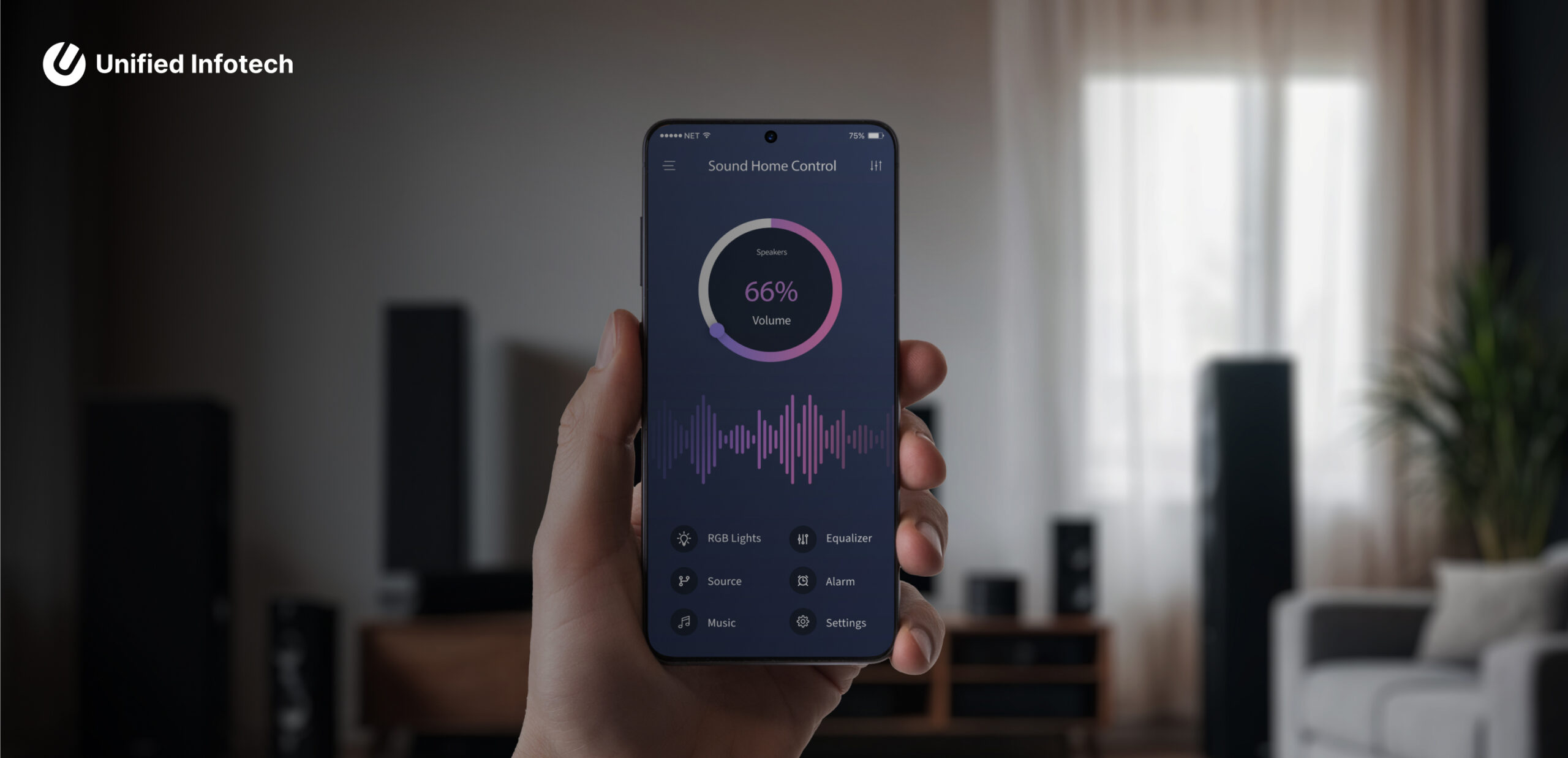
Site Search
How to Create Your Own Real Estate App Like Zillow
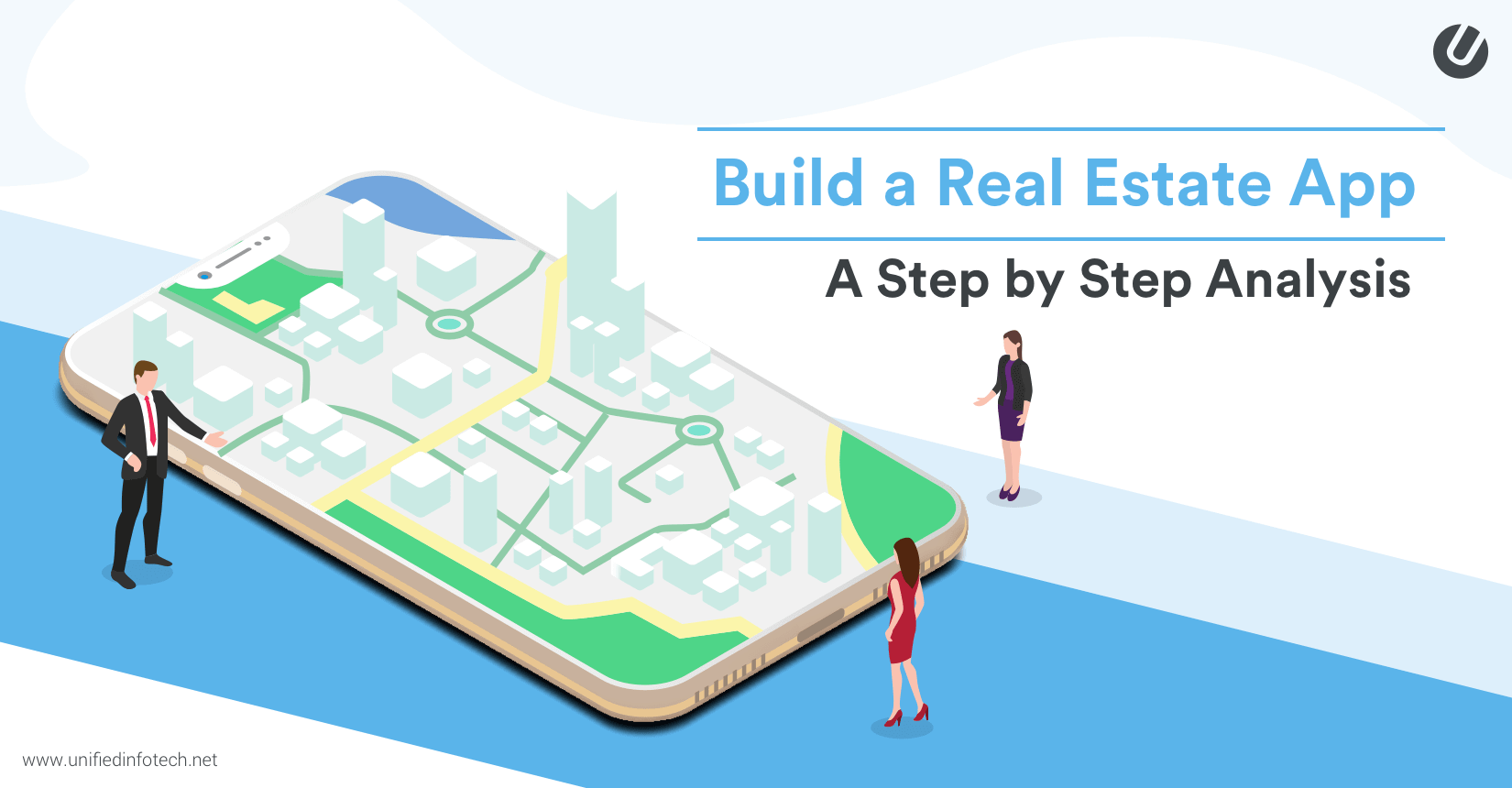
Table of contents

Let's talk
Reach out, we'd love to hear from you!
We all know some really cliche lines like
“The home is where the heart is”, or “home sweet home”.
However cliche these lines may seem like, home is the closest place we have to heart. After all, it is THE place we can come back to after a long day and just take a nap!
Buying a house is not an easy process. You have to go through various property listings, talk to agents, sort through paperwork and complete many other duties. This complication of process calls for a simple solution, and that solution is real estate apps.
So if you think that as a startup you can provide that solution, then this article is for you. If you want to create your own real estate app like Zillow but don’t know how then this article is going to give you all the details you need.
From idea validation to all the steps that it takes to build such an app (no pun intended!) and then some unique integrations, we are going to discuss it all. So without any delay, let’s look at the steps you need to follow first.
Building a Real Estate App like Zillow – Brick by Brick
It may seem like a difficult thing to do, but building a real estate app is extremely easy, especially if you follow these steps…
- Validate your real estate app idea
- Know the app types
- Plan out the app features
- How should be the UI/UX
- What should be the tech stack?
- Monetization Strategy
Let’s create a real estate app now!
1st Brick: Idea Validation: Why You Should Create Your Own Real Estate App
Let’s talk about the validity of the idea before talking about realtor app builder.
At first glance, the idea of such an app seems a little ridiculous. Because buying and selling houses is something that has been done without any apps or software for decades. So why suddenly use an app now?
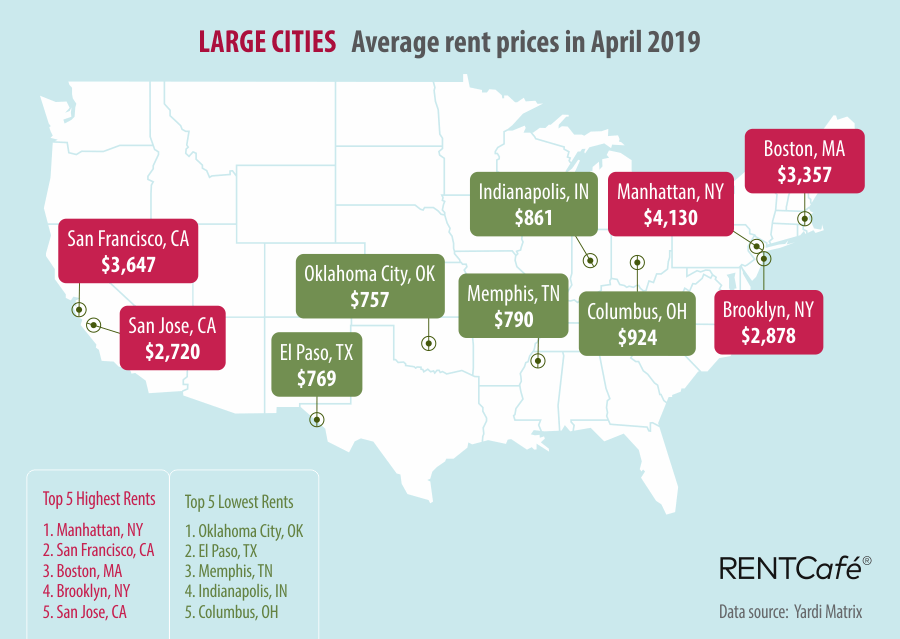
If you look into the image above, the high rates of rents are proof of why people are looking to but their own homes rather than giving rents. With real estate apps like Zillow and Trulia in New York and California, the real estate industry is one step closer to digitization, helping to make the complicated process of home buying easier.
A. Better for mobility
Is it going to be easier for users to use their smartphones for property browsing?
The answer is yes. They are using their phones for every other task anyways. If you make the right app, users can look for property on the go with these apps. There’s no need to visit every prospective house and location they see fit. They can check out the details of the house or the apartment from the app and visit if it matches their requirements.
B. Location centric
There is a geolocation feature on every smartphone and that m2akes it easy to make location-centric searches. So it’s not surprising when the users can make location-centric searches and find the places nearby without any hassle. Zillow real estate app makes it easy. Take a note here.
C. Instant notification
It’s an instant age and people like things instantly. They don’t want to wait for weeks to get details on a property, they want those details instantly, or at least want to know instantly when the details are becoming available. And that’s how real estate apps are becoming crucial for the users on their path to find the perfect home.
Now let’s see how real estate mobile app development is helping the industry professionals-
D. Providing Better Customer Support
The real estate business is a complicated one, but if you create your own real estate app, you can ease the pain. The clients need proper customer support to actually get through this. And an app is going to be the perfect tool for that. The features such as constant and direct connection with the clients are going to make it easy to build a healthy relationship with the clients.
E. The Direct Marketing Facility
Real estate apps are the best instrument for directly marketing your business to the clients. There is no interruption of a third party or spam. Not only it will bring in more clients and therefore more business and revenues, but it will also keep the clients engaged with your business.
F. Stand Out Among The Competition
With an app, you will get a better understanding of your clients as well as stay updated with the popular market trends. Not to mention, with a specialized app for buying and selling property, you will be able to stand out in the market and get more clients easily.
Now that we have validated the idea of real estate app development, we need to talk about the two distinct types of app you can build.
2nd Brick: Know The App, Know The Types
Before you hire any freelancer or real estate app development company, you need to understand the app types.
When it comes to mobile app development for real estate, there can be two types of apps depending on how they function. The first one is an agency based app, and the second one is a third party app. How these apps function? Let’s see-
A. The Agency App
The agency app, just like its name, belongs to the specific real estate agencies. Working as the digital face of the business, the agency app lists all the houses under their listing, has all their agents listed for easy access of the users.
With the agency app, the agency can keep track of their business improvements, how many clients are engaging with their agency, and what their demands are. It is basically an improved tool for business management and improvement.
B. The Third-Party Model
The third party or the aggregator model works as the mediator between the buyers and the agents. The workings of the third party model is a little different than the agency app.
- The users can sign up either as buyers/sellers or freelancer agents. The freelancing agents can upload their own listings and expand their network through the app.
- The user, on the other hand, can contact the agents nearby, browse through their listings, look for houses they are interested in.
- The sellers can sign up and contact the agents about the property they want to sell. The third-party app basically becomes a platform for the agents and the buyers/sellers to easily and instantly communicate.
Once you have decided on the app model, the next step is going to be planning the right real estate mobile app features.
3rd Brick: Planning the Futuristic features
Just like manners maketh man, the features maketh an app.
And that’s why you have to be careful about picking the right features for your app. The right real estate mobile app features can help your app become more functional and useful for the users. You can also go for a whiteboarding session with a reliable mobile app development company based out in New York to get the feel of the market. So what kind of features does your real estate app need? Here is a list-
A. Login/Signup
By signing up the users can create a personal account where they can save various information and preferences, search histories, etc. There are a few ways this feature can be implemented-
The users can sign up using their mail ID or phone number. It is also important that you implement the social media signup feature. With this feature, the users can sign up using just one tap. Make sure that the app is easily accessible from the login/signup phase.
B. View/Edit Profile
Along with the ability to create a profile, the users should have the ability to view and edit their profiles as well. The users can add and edit their details, search histories, preferences, etc. This feature will not only let them personalize their profiles but also make their app experience better.
C. Filter & Search
The users are going to use various keywords to look for the right property. This means that your app is going to need a robust search and filter feature.

The search feature needs to be incredibly accurate so that the users don’t have to search too long for a location. And to make it more accurate, you need to add a filter option as well. With this option (also present in Zillow mobile app), the user can filter properties by location, prices, type, ratings, etc.
D. Mapview
For property searches, the map feature becomes incredibly important. With this feature the user can easily navigate new locations, routes, look for specific landmarks near the properties, etc.
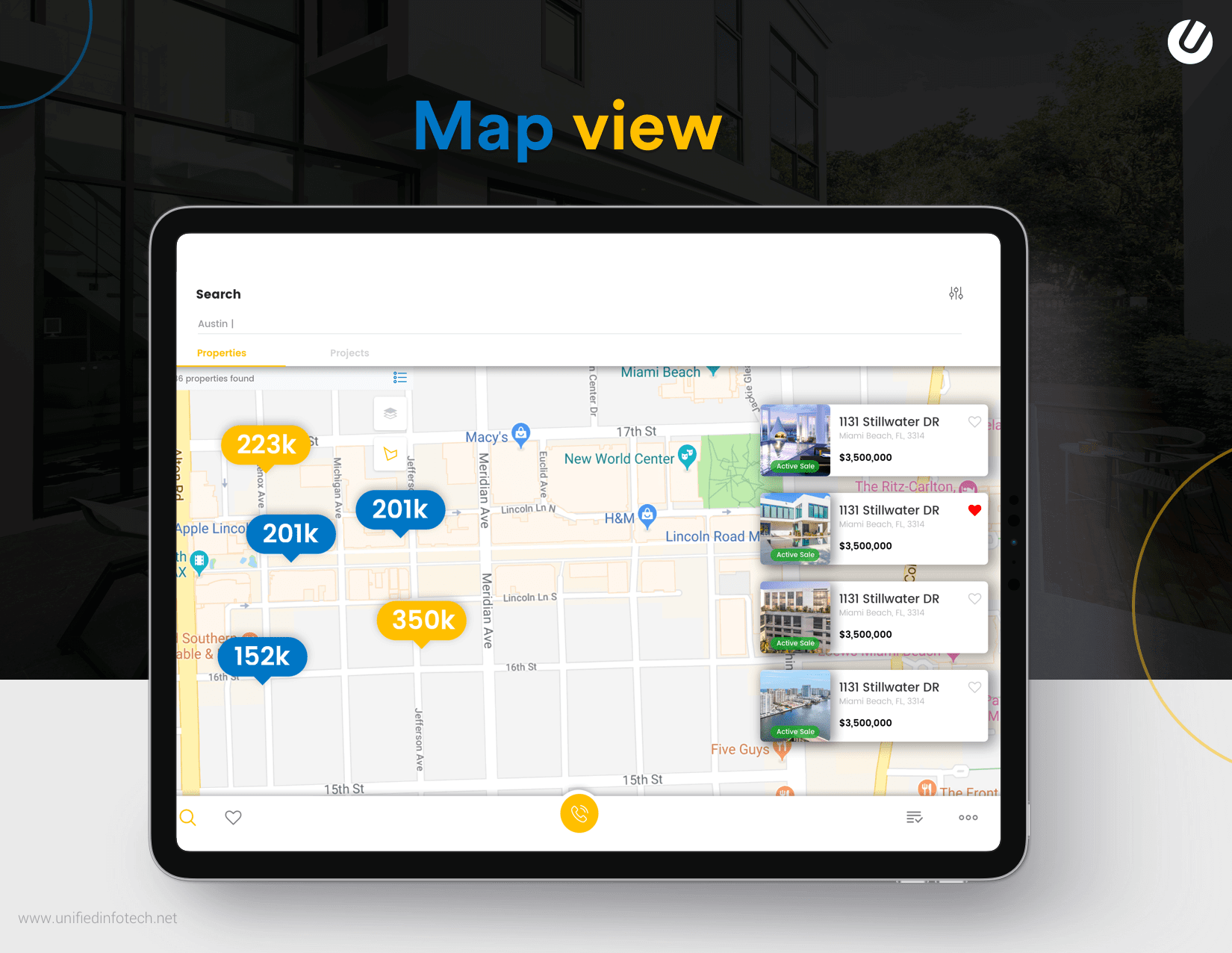
Another unique way of integrating the map feature is through heatmaps. With heatmaps, you can display proper distribution of data about things such as crime rates in the neighborhood, traffic flow in the locality, population density around the property, etc. To integrate the heatmap feature, you’d need to consult Google maps documentation for information on heatmap utility for android apps, and for iPhone app development you need to consult the displaying overlays on a map in the iOS developer library.
E. Property Details
Next is property details. Of course, the users need to know all the details about the property before expressing any kind of interest in it. In the real estate app Zillow or Trulia, you will see houses needs to have the below-mentioned details listed to attract the interest of the buyers-
- How old the house is?
- What is the condition of the house?
- What the offering price is?
- The location of the house
- How long the owners have lived there.
- How many times the property has changed hands in the past.
- A brief history of the property.
Without the property details section, no buyer will show any interest in the property, so make sure that the details section is clear and detailed.
F. Reviews & Ratings
Ratings and reviews are other important features that your app needs. With this feature, the users will be able to leave their reviews on the property after viewing, about the agents on the platform and help the other users to understand the quality of service they can get from the app.
G. Image Gallery
Pictures are worth a thousand words, and even though there is a long and detailed description of the property, the buyers want to look at pictures. With the image gallery feature, sellers and agents can upload detailed images of the property to attract even more clients.
H. Social Sharing
With most people on social media platforms today, it is necessary that your app includes a social sharing feature as well. Because through social sharing, the sellers and agents can share a property listing on the social media platforms and get more interested buyers.
4th Brick: Interior Decoration for the App: the UI/UX Design
Decorating the interior of a house is important, so is the UI/UX for real estate mobile app design.
It’s the UI UX of a real estate app that is going to keep the users engaged in your app. They would move on from the app if they don’t like the design and user experience. So how are you going to make sure that the design and experience of your app stay up to the mark? Here are eight tips to design an amazing UI/UX for your app.
A. Use Clear Images And Videos
The use of clear images and videos is going to form the visual aspect of the entire app. The users definitely want to see the images before they decide if they want to go and visit the property or not. To create your own real estate app, you need to use high definition images is going to improve UI aesthetics as well.
B. Don’t Use Just Maps, Use Heatmaps
The map feature is a must, but there’s another way to improve it and that is through heatmaps. With the distribution of colors, heatmaps display various data such as population, crime rates, etc. The implementation of this feature is not only going to elevate the user experience but it is also going to make your app look great.
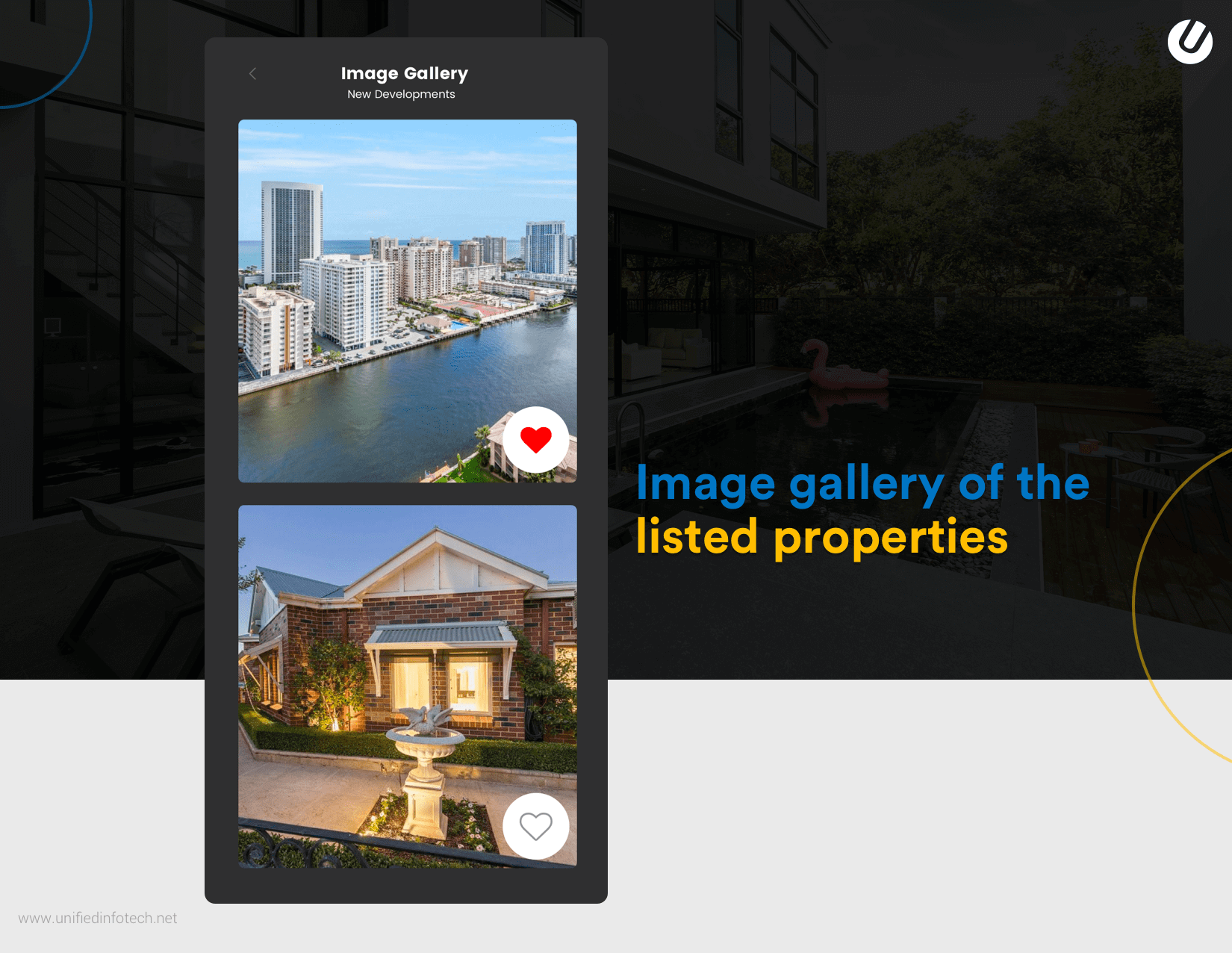
C. Easy To Understand Menus
Avoid using too complicated terms and words for menus. Buying and selling a property is a complicated task already, and adding complicated terms is going to add more pressure on the first time user. The use of easy-to-understand terms for menus will help the users feel more comfortable with your app.
D. Easy Navigation Pattern
The navigation flow of your app needs to be easy to understand, almost intuitive. The users shouldn’t have to scramble through your app to find what they are looking for. So make sure that the transition from one point to another on the real estate app is easy and smooth.
E. 3d Walkthrough And Floor Plans
An added bonus to the image feature, 3D walkthrough, and floor plans would help the buyers to get an actual understanding of the floor plan, how the house looks from the inside and whether it matches their requirements or not. It will help them to make a decision on if they want to check out the property in real life or not.
5th Brick: The Tech Stack That Makes the Apps
After deciding all the features and functionalities, you need to decide on the proper tech stack to implement all those interesting features on your app. Here are a few tech stacks used by apps such as Zillow mobile and Trulia to get you started in planning the tech stack for your tech stack to create real estate sites like Zillow.
- The audience for property apps are quite extensive, including all kinds of people. So it’s important to go with a multi-platform approach, in which care, you will need Java to develop real estate applications for android and Swift for the iOS version.
- Database: you can use Postgress, PostGIS SQL to integrate the databases on the system. You can also use APIs such as SimplyRETS, iHomeFinder, etc.
- For social network sharing, you will need the Facebook SDK.
- You can create an interactive and customizable map with the help of Mapkit.
- Push notification feature: Firebase SDK and Apple Push Notification.
6th Brick: How to Make Money With the Apps?
You’re going to spend a lot of money to create a real estate app. Get an estimation of how much does it cost to build an app now.
So how are you going to earn that money back?
Whether you choose Android app development or iOS, the following revenue models will generate proper revenue for you:
A. Advertisement
Tried and tested, this monetization model has been around for a long enough time. And surely with relevant advertisements, you can generate revenue easily. However, make sure that the ads displayed are relevant to real estate, such as bank loans, mortgages, home renovation, etc. Every time any user taps on the ads you will earn a small revenue. If you want to create your own real estate app, this is your way to earn more money.
B. Various Fees
You can implement various fees on your application, such as listing fee when a user wants to get their property listed, extra fee from the agents on the platform to boost their profile to help them to get more clients etc. however, once again you should practice caution because having too pay too many fees will eventually annoy the users.
C. Premium Subscription
Last but not least, the premium subscription will enable the users to use the app to its full extent. You can offer a free trial of all the features on the app for a time period. After that time period, the user can either keep on using the limited version of the app or they can upgrade to the premium version by paying an amount.
Bonus: Real Estate App And AI: A Unique Integration
Artificial intelligence is everywhere, and as it turns out, it can transform your app as well. As an experienced real estate mobile app development company, we recommend the following ways to integrate AI into your app to make it stand out.
A. Chatbots
The chatbots are the best implementation of AI in the real estate app. Through the chatbot you can provide amazing customer support, making your app one of the most efficient in the market.
B. Debt Forecaster
With the help of AI, the app can forecast on the debts and loan defaults. With AI integration, the app can also help the user evaluate the risks factor on any property investment they make. Calculating the basic parameters, the AI can help the users to understand the risks and make proper decisions about the investments they are about to make.
Some Final Words To Create Your Own Real Estate App
Mobile applications for the real estate industry can be safely dubbed as the future of the real estate industry. However, the market for the real estate industry is not yet that saturated, and there is still a lot of opportunities for you to capture the market with your app. Got any questions? Feel free to contact us, we will be glad to help you bring your real estate app development idea into reality.



